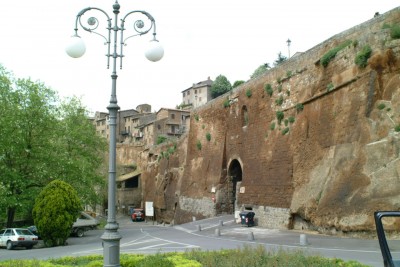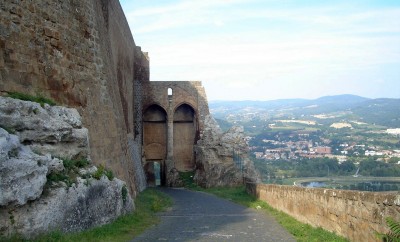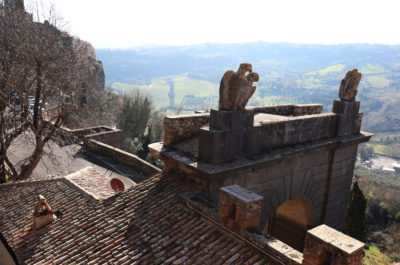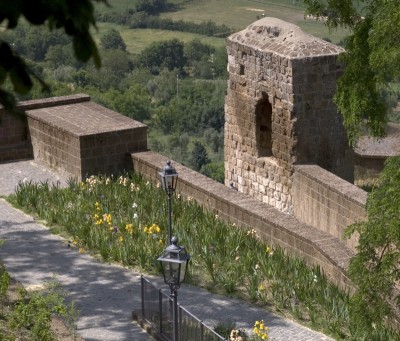Orvieto, the city collected in the scope of its volcanic plateau, has historically had the privilege of this geological structure that represented a real natural fortification. To access the interior of the city, over time its inhabitants have created paints of entrance which today are the “historic doors” (porte) of Orvieto itself. Some of these entrances have been demolished, but others remain still in use today. Two other massive entrances were demolished over time and no longer visible in Orvieto. The Porta Cassia, a structure similar to the structure of Porta Romana. It was located along the Strada della Stazione just before arriving in Piazza Cahen.

Porta Maggiore
The main old entrance to the city and the most important during Etruscan and medieval times. For a long time Porta Maggiore was the only major access route to Orvieto. Today it is located at the end of Via della Cava now a oneway out of the city.
It was often used as the entry point for the arrival of the Popes to the city. Above the door is a niche that houses a copy of the original the statue of Pope Boniface VIII.

Porta Soliana (or Porta Rocca)
This historic access initially called Porta Postierla, then renamed Soliana (or even the Rock) is built into the walls of the fortress Albornoz, on the eastern side of the city. Its structure (modern gothic style) is very beautiful and in part matches the black and white stripes of the Duomo exterior.
In 1297 Pope Boniface VIII put his statue in the niche above the two arches (another Pope Boniface VIII statue was collocated on top of the old Porta Maggiore).

Porta Romana
Built in 1822 in place of the ancient Porta Pertusa, it is one of the main entrances to the city used today.
Its structure reveals the modern period of the building and on the top are the two symbols taken from the coat of arms of the city: the imperial eagle and the duck, both of these animals have a symbolism closely related to the historic city of Rome.

Porta Vivaria
Of this ancient city entrances this one is the least visible today. It is now accessible only by foot connecting the center with the area of the Etruscan necropolis.
The necropolis is connected to Porta Vivaria and the city center with a scenic walkway that runs along the cliff. Porta Vivaria was widely used during World War II because of its safety and unique access to the city.



